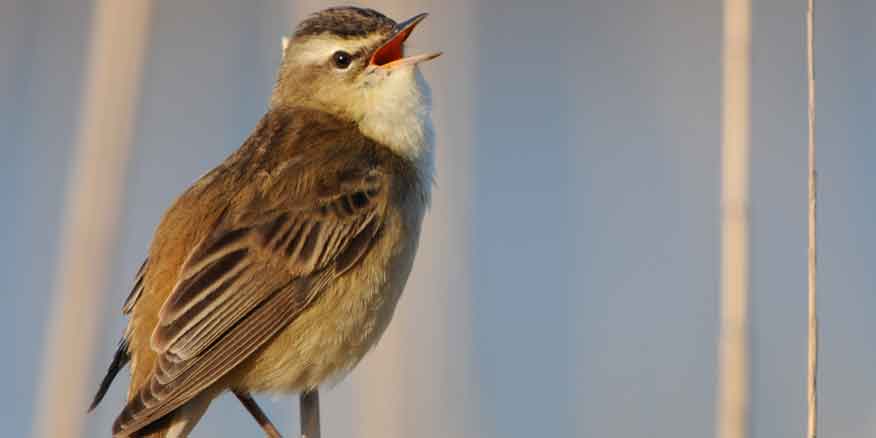
Birds of Clare Island: Sedge Warbler
19 August 2020On Day 5 of Heritage Week we introduce a migrant bird breeding only at two locations on Clare Island, featuring in New Survey of Clare Island, vol. 9: Birds.
The ninth volume in the New Survey of Clare Island series focuses on the birds of Clare Island and is being released on 17 August as part of Heritage Week. Join us during Heritage Week and learn about some of the many birds that populate the island.
Today, you can read the entry on the Sedge Warbler as it appears in Chapter Two of New Survery of Clare Island, vol. 9: Birds. Chapter Two contains an inventory of the birds of Clare Island, and this is compared with the findings of the first survey conducted during 1909–11. The list comprises records that span the period from 1887 to 2018.
Sedge Warbler Acrocephalus schoenobaenus (Linnaeus)
Migrant; breeds, but only at two locations.
‘Repeatedly identified in marshy ground near Clare Island harbour in June, 1910, and July, 1911’ (Ussher 1912), as it is today (e.g. Coombes unpublished data; Kelly unpublished data; D’Arcy 1992; Forsyth and Allen 1997; Winters 2006; Balmer et al. 2013). Interestingly, the sedge warbler was not reported by Barlee and Ruttledge (1945) or by Lloyd (1984), leading the latter to conclude that the species had become extinct in the 1911–45 period. However, it is at least possible that Barlee and Ruttledge’s (1945) visit was too early to detect this migrant species and Ruttledge (1950) even expressed doubt about Ussher’s conclusion that it was breeding on Clare Island in 1910 and 1911.
The diagnostic ‘tchurr’ alarm call (Ferguson- Lees et al. 2011) has been heard on many occasions including 13 July 2003, and an adult was seen carrying food on 15 July 2000; one was seen on 25 August 2002 (Kelly unpublished data) (see Chapters 4, 6 and 7; Balmer et al. 2013). Sedge warblers were recorded at two locations in 2016: on 28 May (James Kilroy) and 10 June (Dr Líam Lysaght) respectively.
Image credits: R.T. Mills
About the book:
Explore Clare Island’s avifauna, including the seabirds, land birds and waterbirds, and investigate the curious absence of breeding rooks from the island. This volume features a systematic list comprised of records of bird sightings that stretch from 1887 to 2018. The result of almost 20 years of fieldwork, it is an invaluable source for future monitoring of birds on Clare Island and beyond.
The first Clare Island Survey of 1909–11 was the most ambitious natural history project ever undertaken in Ireland and the first major biological survey of a specific area carried out in the world. The ‘Birds’ paper included in that survey was written by Richard J. Ussher and was based on fieldwork conducted on the island between 1909 and 1911. Ussher’s ‘Aves’ paper, however, also summarised details of the avifauna of a wider area in the west of Ireland—mainly the Counties of Galway and Mayo—a theme that was revisited several times by the late Major Robert F. Ruttledge. The current ‘Birds’ volume focuses exclusively on Clare Island and applies modern methods of census.
Buy the book here.
About the project:
The New Survey of Clare Island is a unique multidisciplinary project, the overall aim being to assess the environmental changes that have taken place over the last hundred years on Clare Island. Together with Robert Lloyd Praeger’s first Clare Island Survey, the New Survey provides an invaluable body of research informing future conservation of natural and built heritage of Ireland and Europe.



